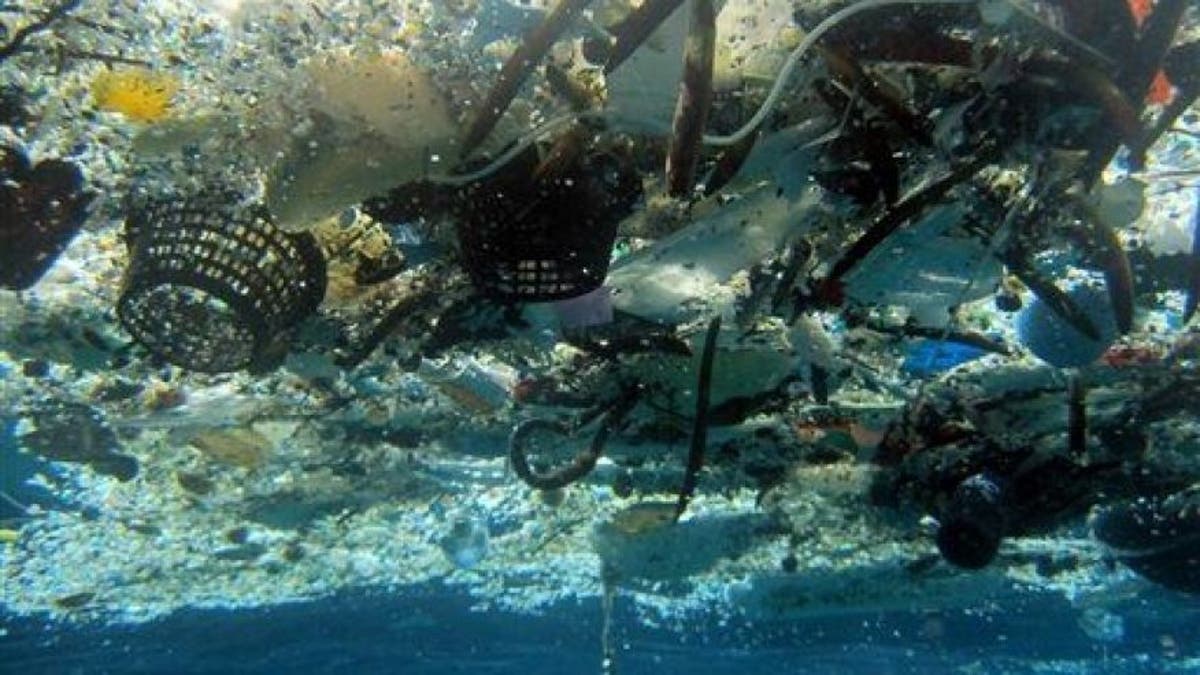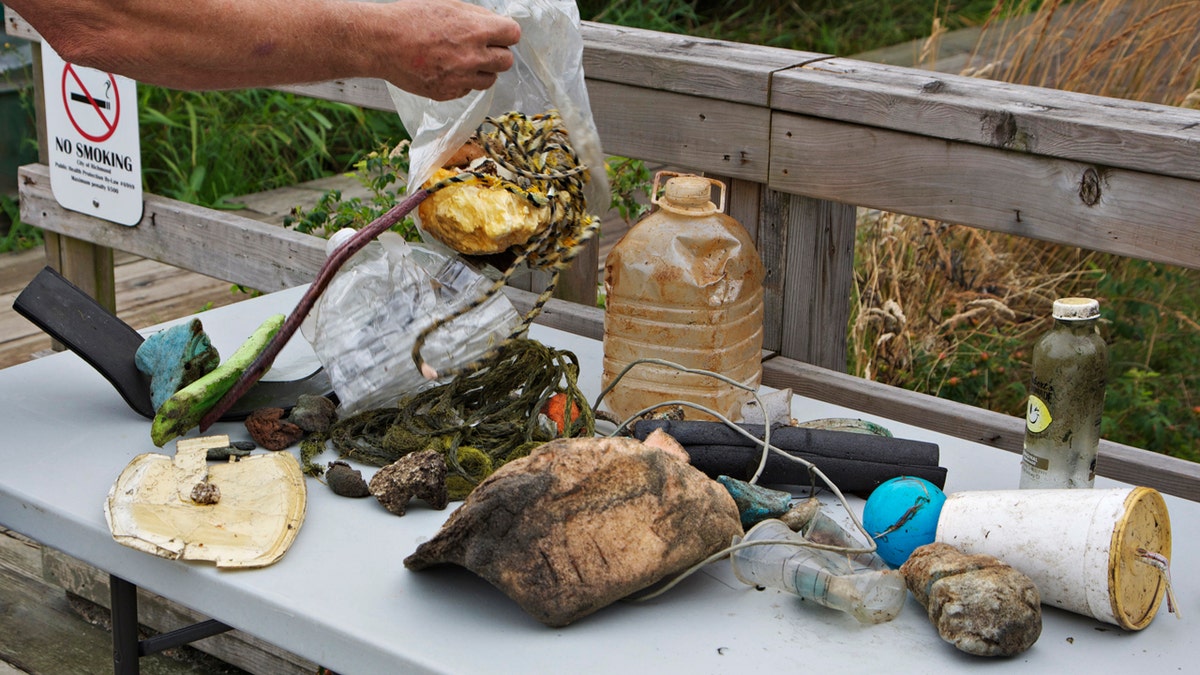
A "floating" island of trash dubbed the Great Pacific Garbage Patch (GPGP) now stretches 600,000 square miles. (AP Photo/NOAA Pacific Islands Fisheries Science Center)
The Great Pacific Garbage Patch – an enormous swatch of trillions of pieces of plastic and trash floating somewhere between California and Hawaii – is already three times the size of France and growing fast, according to a new report published in Scientific Reports.
The study, which analyzed a total of 1.2 million plastic samples retrieved from the patch as well aerial scans, estimates that there are at the very least 79 thousand tons of plastic floating around in an area of more than 617,000 square miles – a figure that is between four and 16 times higher than previously thought.
“Historical data from surface net tows indicate that plastic pollution levels are increasing exponentially inside the GPGP [Great Pacific Garbage Patch], and at a faster rate than in surrounding waters,” the authors of the study wrote. “While this does not necessarily mean that the GPGP is the final resting place for ocean plastic reaching this region, it provides evidence that the plastic mass inflow is greater than the outflow.”
The GPGP was first discovered in 1997 when Charles Moore, a yachtsman, sailed through the mess of plastic bottles, discarded fishing nets and other trash while on his way back home to Los Angeles. The patch was given its now infamous moniker by Curtis Ebbesmeyer, a Seattle-based oceanographer who is known for tracking ocean currents along with cargo that has fallen overboard.
While numerous claims have been made about the patch – some incorrect (like it can be seen from space) and some just plain farcical (two advertising executives named it Trash Isles, signed up Al Gore as its first citizen and petitioned the United Nations last fall for official recognition) – the study in Scientific Reports is the first real comprehensive look at what makes up the massive pile of waterlogged garbage.
Among the findings is that it’s not plastic bottles that make up the majority of the patch, but discarded fishing nets - accounting for 46 percent of the trash in the patch. The rest of the patch is comprised other fishing industry gear such as ropes, crates, baskets and eel traps, while it is estimated that debris from the 2011 tsunami that struck Japan accounts for a full 20 percent of the patch.
“I knew there would be a lot of fishing gear, but 46 percent was unexpectedly high,” Laurent Lebreton, an oceanographer with the Ocean Cleanup and the study’s lead author, told National Geographic. “Initially, we thought fishing gear would be more in the 20 percent range. That is the accepted number [for marine debris] globally—20 percent from fishing sources and 80 percent from land.”

A small amount of debris found by Ocean Voyages Institute's ship, the Kaisei, is put on display in Richmond, British Columbia August 8, 2012. The tall ship has just returned from the North Pacific where crew members tracked and salvaged man-made debris found floating in the area known as the Great Pacific Garbage Patch. The ship also conducted research on debris from last year's Japanese tsunami, which is currently floating across the Pacific and beginning to wash up on shores along the North American West Coast. REUTERS/Andy Clark (CANADA - Tags: SOCIETY MARITIME DISASTER ENVIRONMENT) - GM2E8890FMX01 (Reuters)
The Scientific Reports study coincided with another report on by Britain’s Foresight Future of the Sea, which estimates that plastic pollution in the ocean could triple by 2050, putting it alongside sea level rise and warming oceans as one of the main environmental threats facing marine life, and the seas in general.
“Plastic does not decompose, instead breaking down into ever smaller pieces,” the report states. “The full effects are not understood, but there is growing evidence of plastic harming sea creatures and restricting their movement, as well as polluting beaches.”
The report added: “The major response is likely to lie in preventing it from entering the sea, introducing new biodegradable plastics, and potentially public awareness campaigns about marine protection – again addressing the out of sight, out of mind challenge.”




















